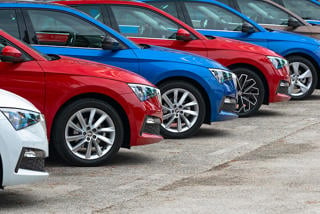By Ian Goodwin, tax partner at Mazars
Over the past few years, HMRC’s attention has been focused on the pandemic and as a result HMRC have had little time to review other key areas.
As the admin burden of the pandemic lessens, attention is starting to return to day-to-day compliance matters, one key area being “vehicle classification” for benefit-in-kind purposes. And it is this I want to focus on.
HMRC has now accelerated its investigations, enquiring into companies of all sizes, and there is a concern that many businesses could be sleepwalking into a significant tax liability.
The fears stem from the fact it’s more expensive from an Income Tax and NIC perspective to drive a company car than a company van – this is also true of any associated fuel benefit provided.
With classifications under microscopic investigation, arguments are arising on whether a particular vehicle is a car, or something else.
One of the most notable instances is the case of HMRC v Coca-Cola European Partners Great Britain Limited UKUT 0090 (TCC).
The case (most recent update was in 2020) resulted in HMRC winning the appeal that Coca-Cola’s Vauxhall Vivaro and VW Transporter T5 Kombis (1st and 2nd generation) were cars and not vans.
This is not a “new” risk. No legislative change has been made to date, HMRC has updated its guidance though and has renewed its challenge to businesses on their vehicle classification for benefit in kind purposes. It’s important to note that even if a vehicle is a van for DVLA purposes, it could still be a car for benefit in kind purposes.
For illustrative purposes and to highlight the complexity facing fleet managers, a diesel vehicle with a list price of £40,000 and CO2 emissions of 125g/km would give rise to the following liabilities.
If classified as a van, the benefit will either be nothing, if only made available and used for home to work commuting and business travel, or £3,600 for the van if it’s available for personal use and £688 for the fuel benefit.
Therefore, tax at 40% would be about £1,700 and Class 1A NIC for the employer would be approximately £600.
However, if a car, the benefit in kind would be £40,000 x 34% = £13,600 (cash equivalent of the benefit).
HMRC would also challenge that private fuel had been provided, this would be an additional benefit of £25,300 (cash equivalent of benefit used for illustrative purposes) x 34% = £8,602
The tax on the total benefit of £22,202 at 40% (assuming the taxpayer is a higher rate taxpayer) would be £8,880
The employer Class 1A NIC would be around £3,000.
If HMRC decided to assess liabilities going back six years, a liability of around. £53,000 could be created for the individual (plus interest and penalties) and the employer would have around £18,000 to pay back.
If the employer picked up the employee’s tax bill, it would need to be grossed up and NIC would need to be paid on the tax paid on behalf of the employee too. This could then create a liability of over £100,000 for one vehicle over six tax years.
For businesses with multiple vehicles this could bring significant cash flow issues and also bring about distress for families, households and individuals. Considering the usage employees get from work vehicles, as well as the exact model and purpose of the vehicle, is essential.
And enhancements in modern vehicles are creating a greater risk of a challenge as more vehicles previously defined as vans may now be seen by HMRC as having dual purpose and therefore viewed as a car for benefit in kind purposes.
There needs to be clearer guidance from HMRC about which vehicles are considered vans and which are at risk of being classed as cars for taxation purposes.
HMRC should also introduce an amnesty to protect businesses who have taken reasonable care when it comes to benefit in kind taxation historically. This will allow businesses to invest in their fleet with confidence and have reassurance their tax liabilities won’t change overnight.




















Login to comment
Comments
No comments have been made yet.